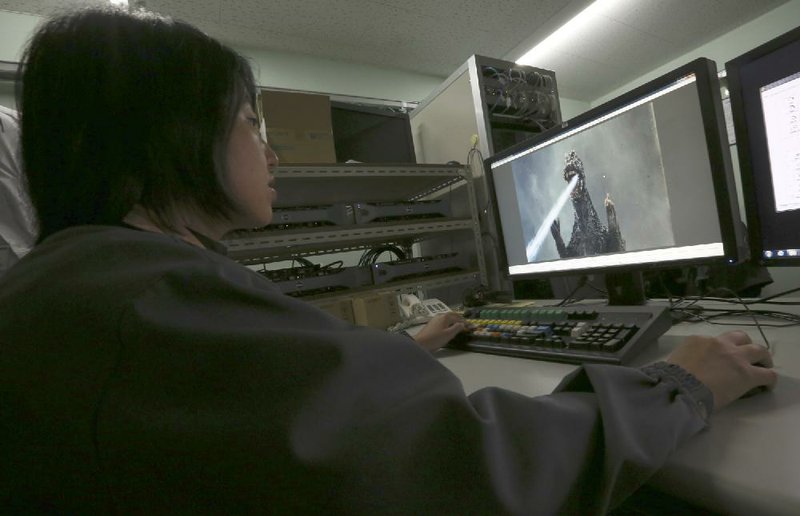TOKYO -- At a humble Tokyo laboratory, Godzilla, including the original 1954 black-and-white film, is stomping back with a digital makeover that delivers four times the image quality of high definition.
The effort with "4K" technology is carefully removing scratches and discoloration from the films and also unearthing hidden information on the reel-to-reel images.
Experts say the chemical reactions used to make old movies stored far greater detail than was visible with the limited projection technology of the era, as well as with subsequent digital updates.
If all the hidden information of a reel-to-reel is ever brought out, quality would approximate 8K, they say.
Only one minute from the original film and from each of the sequels has been turned into 4K so far, but the results are stunning enough.
Faded, blurry, yellowing footage of the radiation-breathing creature that emerged from the Pacific after atomic-bomb testing becomes sharp, clear and vivid, making it almost look like state-of-the-art animation.
It's better than the original, said Toshifumi Shimizu of Tokyo Laboratory Ltd., the studio that undertook the painstaking effort.
"You can feel the impact of the bodies banging into each other under the suits," he said.
Shimizu said many scenes are more real and emotionally moving than in what is achieved by today's computer-graphics manipulation, widespread in Hollywood blockbusters.
The details of the cityscape models, the bumpy skin of Godzilla and the metallic shine of the robots are revealed as they once were.
The craftsmen at the lab made a point to keep visible the wires from which the flying monsters hung. The goal was to stay true to the intention of the original.
In turning Godzilla films into 4K, each frame of the reel-to-reel is scanned by a special machine. Each frame is then examined for blotches and other damage that have crept in over the last 60 years. Any problems with a frame are fixed on a computer, one by one, by a film-processing specialist.
Shoko Ideriha, one of the specialists, said the team pieced together the best segments, working with the only three copies left of the 1954 Godzilla. She compared fixing film to being a doctor treating a patient.
The big catch is that 4K, also known as ultra-high definition, or Ultra HD, can't be seen in most homes or theaters yet.
For one, you would need a 4K TV, which is not cheap. Sony's 85-inch model sells for $25,000, although prices overall are gradually coming down.
More crucial still, 4K broadcasting is virtually nonexistent. In Japan, it's available only in limited test programming.
But believers swear that it will become the standard of the not-so-distant future. Other movie classics, such as Lawrence of Arabia and Gone With the Wind, have turned 4K.
What 4K promises for film classics is astounding, said Takashi Sawa of Nihon Eiga Satellite Broadcasting Corp., which aired all 28 Toho Godzilla classics for the 60th anniversary of Godzilla's birth, which fell this year and marked the debut of Gareth Edwards' Hollywood Godzilla.
Nihon Eiga also aired a special program on the 4K Godzilla project on its cable network, which broadcasts to 7.5 million households in Japan.
Restoring movie classics into 4K might do wonders for the chicken-and-egg dilemma for new technology, which generally won't take off until there is content people want to watch.
"TV drama shows shot in digital cannot be restored as 4K," he said. "But Godzilla can become 4K."
SundayMonday Business on 09/01/2014

